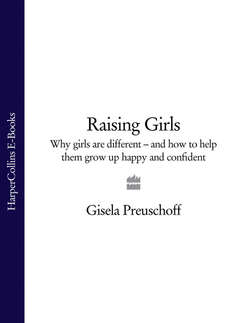Читать книгу Raising Girls: Why girls are different – and how to help them grow up happy and confident - Gisela Preuschoff - Страница 8
The biological part of the story
ОглавлениеWhat do the biological facts say? In the first weeks of pregnancy, when women as a rule don’t even know they are pregnant, male and female embryos are identical, because they have the basic structures of both male and female sexual organs. They are only distinguishable through their sex chromosomes (XY for boys and XX for girls). The X chromosome originates from the egg cell of the mother, and the father’s sperm has either an X or a Y. If the egg is fertilised by an X sperm, it will be a girl; if not, it will be a boy. Most genes lie in the X chromosomes, of which there are around 2000, among them the intelligence gene. The reproductive genes romp around in the Y chromosomes.
Purely statistically, more boys than girls are conceived, but more male than female foetuses are miscarried or stillborn. No-one knows exactly why this is so. It is assumed that either male foetuses are more sensitive to harmful environmental factors, or the mother’s immune system classifies the male foetus as foreign and tackles it, in error, as an ‘enemy’. Could that also perhaps have something to do with the mother’s thoughts?
In the sixth week of pregnancy, the male Y chromosome gives the command to form male gonads; the X chromosome of the developing baby girl only induces ovary development from the twelfth week. During the course of the pregnancy, ovaries and gonads excrete sex hormones, which are involved in the formation of physical characteristics and also influence future behaviour.
The ‘male’ sex hormones are called androgens, and include testosterone; the ‘female’ hormones are oestrogen and progesterone. I have placed these classifications in inverted commas because all these hormones occur in both the male and female organisms, though in differing quantities.
When psychologists talk about a woman’s ‘inner man’ and about men’s ‘feminine side’, that is exactly what they mean. We all have male and female parts in us, and it is sensible to use both!
If the embryo has enough androgens, a penis grows and the female sex organs waste away and disappear. A vagina, fallopian tubes and womb will grow in the female embryo, and the male sex organs will die off. The fallopian tubes of the female embryo already store 6–7 million eggs, but by the onset of puberty this number has fallen to 400,000. On the other hand, boys only produce sperm from puberty onwards.
